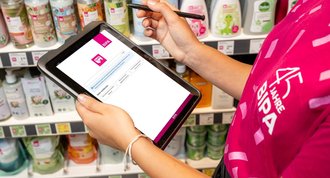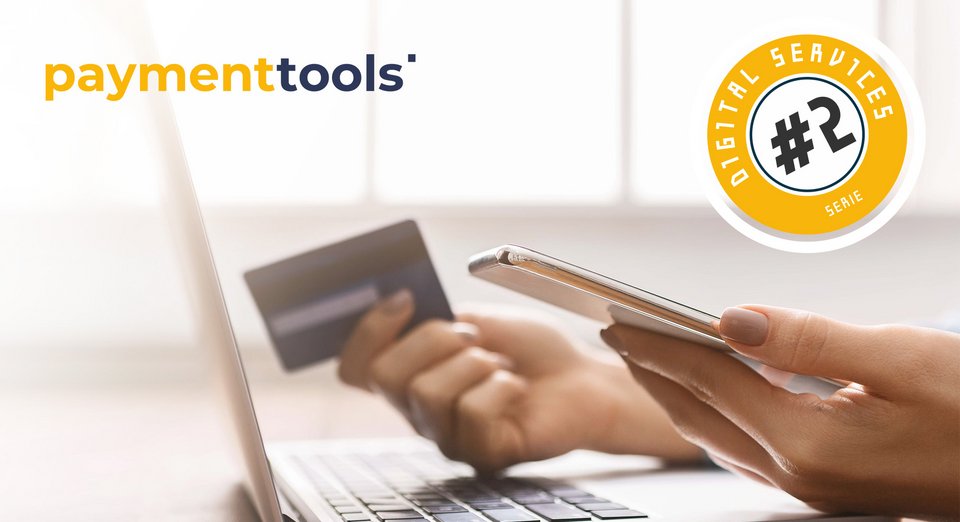
Last year, REWE Group closed the gap between Commercetools, the platform for digital retail, and Fulfillmenttools, which takes care of the fulfilment of deliveries, with Paymenttools. one spoke to Managing Director Jens Kohnen about the advantages of having its own payment service provider and the trend towards cashless payments.
 Jens Kohnen, Managing Director of Paymenttools
one: What does Paymenttools do? What service do you offer merchants?
Jens Kohnen, Managing Director of Paymenttools
one: What does Paymenttools do? What service do you offer merchants?
Jens Kohnen: Paymenttools is a payment service provider that processes cashless payment transactions for merchants. We ensure that consumers can pay our customers - i.e. the merchants - both in bricks-and-mortar retail and in e-commerce. We process the payments and ensure that the money reaches our customers at the end of the day. We process all standard payment methods on the market, such as credit cards, Girocard or PayPal, but also newer payment solutions such as Apple Pay or Google Pay.
one: There are many payment service providers. What makes Paymenttools better or different from the competition?
Jens Kohnen: As a REWE Group re-startup, we have developed an innovative payment system with our Payment Operating System that is ready for the demands of the future. This means that new technologies and new developments are constantly being introduced. Right from the start, we have built our system in such a way that we can react easily to these changes. You could say that nothing is cemented in our system, it's bolted on.
one: And what exactly does that mean for the payment process itself?
Jens Kohnen: We are changing the way consumers in Europe pay across all channels - both online and offline. By integrating all the necessary aspects from credit cards in e-commerce to giro cards at the checkout and enriching them with value-added services, such as customer loyalty programmes, we offer retailers an omnichannel payment that integrates seamlessly into their consumer journey. After all, retail no longer only takes place in brick-and-mortar stores, but also in e-commerce and, above all, across all channels. A customer orders something online and picks it up in-store, using two different channels. Our solution works across all channels.
one: Why are REWE retailers not (yet) able to use the services of payment tools?
Jens Kohnen: As a payment service provider, we are subject to special regulatory requirements. This is why, in the past, our payment services could only be used by 100% subsidiaries of the REWE Group. With the reorganisation, we have now created the framework to make our payment services available within the entire REWE Group, but also to external retailers.
one: Paymenttools is a REWE Group start-up, but also offers its services to other retailers. Isn't that problematic for data protection reasons? How can your clients be sure that sensitive customer data will not fall into the hands of competitors?
Jens Kohnen: Like every payment service provider, we at Paymenttools are subject to regulatory requirements that do not allow us to easily gain insight into sensitive customer data. Furthermore, we have no insight into customers' shopping baskets, for example; we "only" process the payment in the background. Without consent - whether from consumers, our partners or retailers - no data, no matter how sensitive or not, is exchanged. Apart from technical and regulatory hurdles, we base our actions on trusting relationships with our partners and customers.
one: What are the biggest challenges in further developing payment tools? The technology, data quality or perhaps the strong preference of Germans for cash payments?
Jens Kohnen: Cash payments are still a popular payment method for Germans, but we have seen a massive upswing in card payments, not least because of the pandemic situation. In addition, more and more purchases are being made via e-commerce, which is also leading to an increase in cashless payments. We are therefore operating in a strong growth market and the biggest challenge for us as a technology company at the moment is to attract well-trained employees.
one: How will the payment market develop? Will we all be paying with our mobile phones in a few years' time and how important will cash payments and Girocards be then?
Jens Kohnen: The trend towards cashless payment will continue. There will also be further technical innovations that will push the payment process further into the background for consumers. We believe that customers want to shop and are less concerned about how to pay. Which payment methods can hold their own on the market depends very much on whether they cater to customers' digital lifestyles. This applies to the Girocard just as it does to all other payment methods.
What happens in the background: Simple and hygienic, fast and secure: paying by card (often contactless) or smartphone is becoming increasingly popular. To ensure that this works smoothly, payment service providers exchange information in the background and complete the payment process in a matter of seconds.
German citizens' love of cash is crumbling. According to a survey conducted by market research company GfK in summer 2021, almost 60 per cent of Germans prefer to pay by card or smartphone in retail stores. The year before, it was only 54 per cent. In the GfK study, 61 per cent of respondents stated that they had made contactless payments in the past twelve months.
Depending on the sector, payment behaviour changes more quickly or less quickly, but the trend towards cashless is evident everywhere in bricks-and-mortar retail. Last year, well over 40 per cent of all transactions in REWE stores were made with a debit card, credit card or via a payment app on a smartphone. But what happens in the background when a customer makes a cashless payment? That depends on which payment method they want to use to pay for their purchase.
The following applies to all variants: they only work because there is a set of rules (payment scheme) that sets technical and regulatory standards for the execution of cashless payment transactions. In other words, it prescribes how money is moved from bank A to bank B within the respective payment system. Depending on how many parties are involved in a payment transaction by card, there are 3- and 4-party schemes. The four-party scheme (Mastercard, Visa, Girocard) involves: the merchant's house bank ("acquirer"), the customer's house bank ("issuer"), the customer and the merchant. In the American Express (Amex) three-party scheme, the card company has a direct relationship with both the customer and the merchant. The card is not issued by the customer's bank, but directly by Amex.
All payment methods are processed in a matter of seconds. However, the costs to be borne by the merchant for card payments are different: when using the Girocard, they are significantly lower than with Mastercard or Visa. Amex is usually even more expensive. Mobile payment via the merchant app, on the other hand, is associated with similarly low costs as the use of the Girocard, and is sometimes even cheaper.
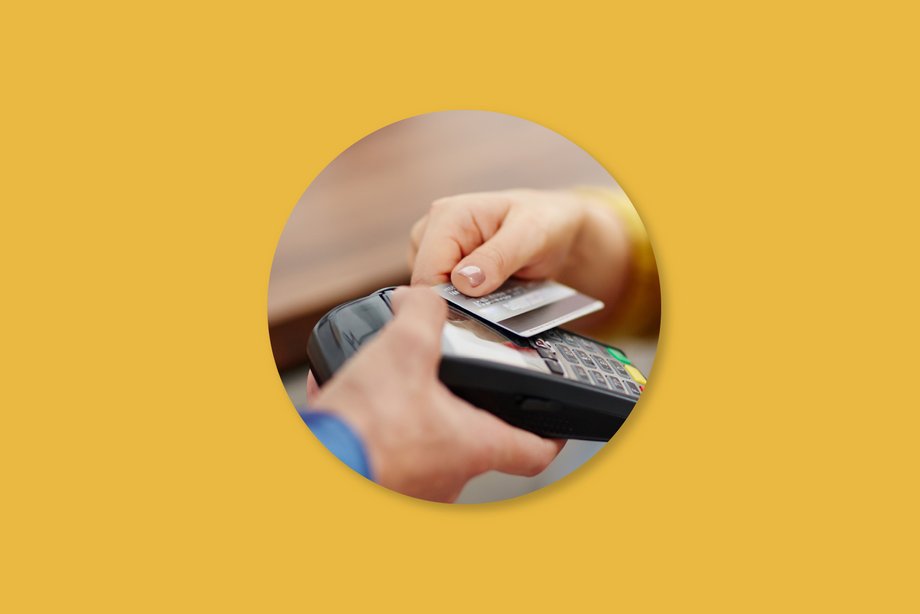 Paying with the Girocard
Paying with the Girocard
This is the most popular form of card payment in bricks-and-mortar retail in Germany. According to the retail research institute EHI, around 40.1 per cent of all revenue in bricks-and-mortar retail was paid for with the Girocard in 2020. At REWE, the share was around 32 per cent in 2021.
When a customer, let's call her Laura, inserts her Girocard into the payment terminal at the REWE checkout and identifies herself by entering her PIN or makes a contactless payment, the payment service provider (PSP) is activated. It first checks which transaction is required: credit card, if so, which one? Or girocard? In this case, PSP recognises a Girocard and also knows which banking group (private banks, savings banks, Volksbanken and Raiffeisenbanken) it comes from. This is important because each banking group has its own "head office" that takes care of authorisation, i.e. whether the card is possibly blocked and whether there is enough money in the account deposited by Laura. If this is the case, the payment is authorised at the checkout. In return, a clearing bank draws a guaranteed direct debit from Laura's account and transfers the money to the merchant's bank. After authorisation, the terminal displays "Payment made".
 Paying with Visa or Mastercard
Paying with Visa or Mastercard
Customer Laura inserts her card into the checkout terminal and the payment service provider recognises that it is a Visa or Mastercard credit card. The payment request is first sent to the acquirer, who forwards it to the credit card company. Visa or Mastercard in turn transfers the request to Laura's Bank, the issuer, based on the credit card number. If an "okay" is received from there, the communication goes back to the PSP: the customer can pay and the transaction can take place. The cash flow between Laura's Bank and the merchant's bank takes place afterwards.
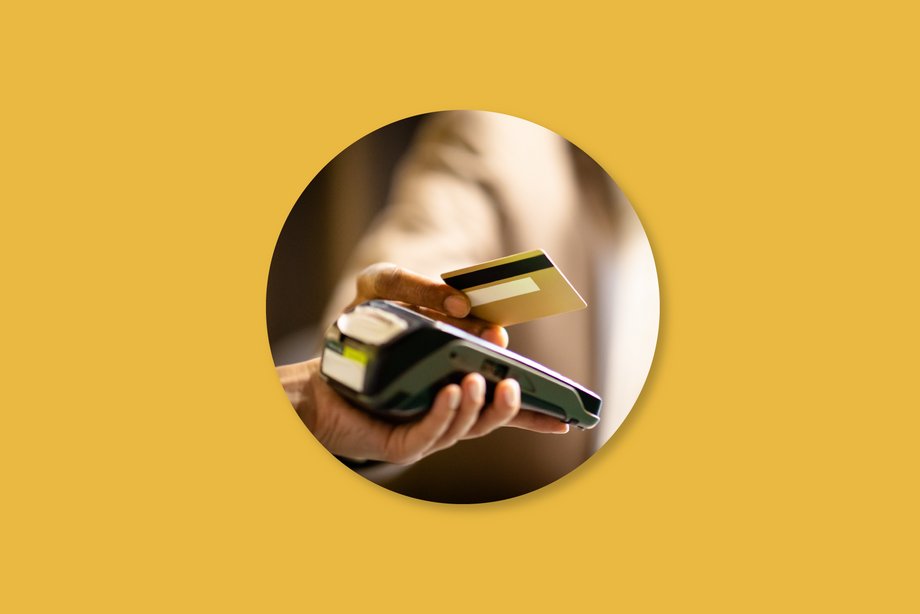 Paying with the Amex card
Paying with the Amex card
Only three parties are involved here: Laura takes out her card and the payment service provider sees that it has to forward the enquiry to Amex. Authorisation takes place there: Is the card in order? Is the available limit sufficient? Amex transfers the amount to the merchant's bank and in return collects the amount from the account that Laura has deposited for the credit card.
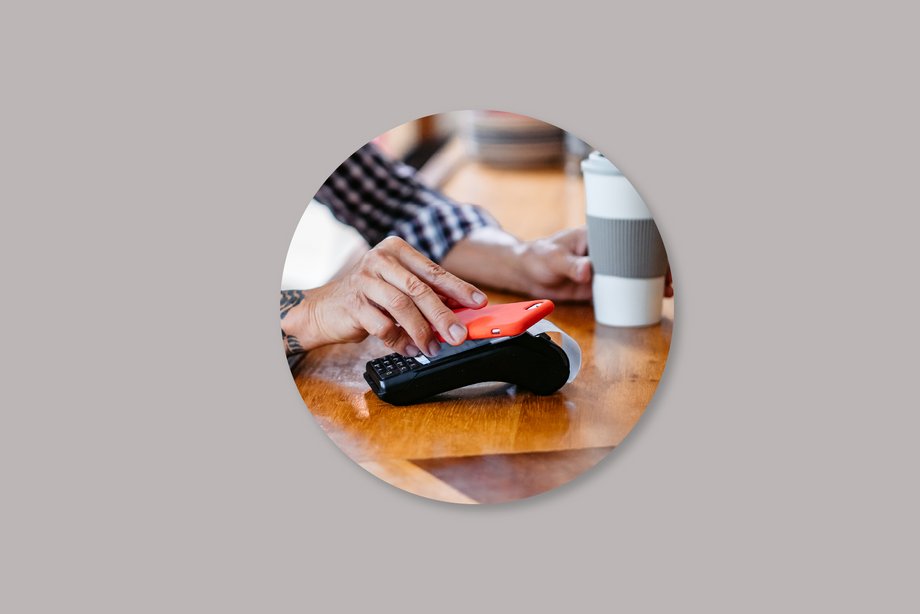 Paying with your smartphone
Paying with your smartphone
Mobile payment with a smartphone (or smartwatch) is becoming increasingly popular, especially among the younger generation. According to the GfK survey from summer 2021, 23 per cent of respondents had paid at least once by mobile phone or watch in the previous twelve months. Among 18 to 29-year-olds, the figure was as high as 33 per cent. A further 17 per cent were open to mobile payment and wanted to try it out in the near future.
Payment by mobile phone works either contactless via a so-called NFC (Near Field Communication) interface or via a barcode or QR code. When Laura wants to pay her bill at the checkout using the retailer's own payment app (which uses its own payment system) and the terminal has registered this, a new player enters the field in the background: the so-called factor. It has been determined in advance by the provider of the payment method. The factor purchases the receivable (i.e. Laura's invoice amount), takes on the risk management and guarantees the merchant that a corresponding direct debit will be honoured. The risk check at the factor is carried out using the IBAN, i.e. the account that Laura entered when registering for her payment app. Is the IBAN on a blocked file? Has it ever been cancelled? There are also scoring files that are based on IBAN numbers. If the IBAN is blocked, Laura will not be able to pay with her smartphone.


